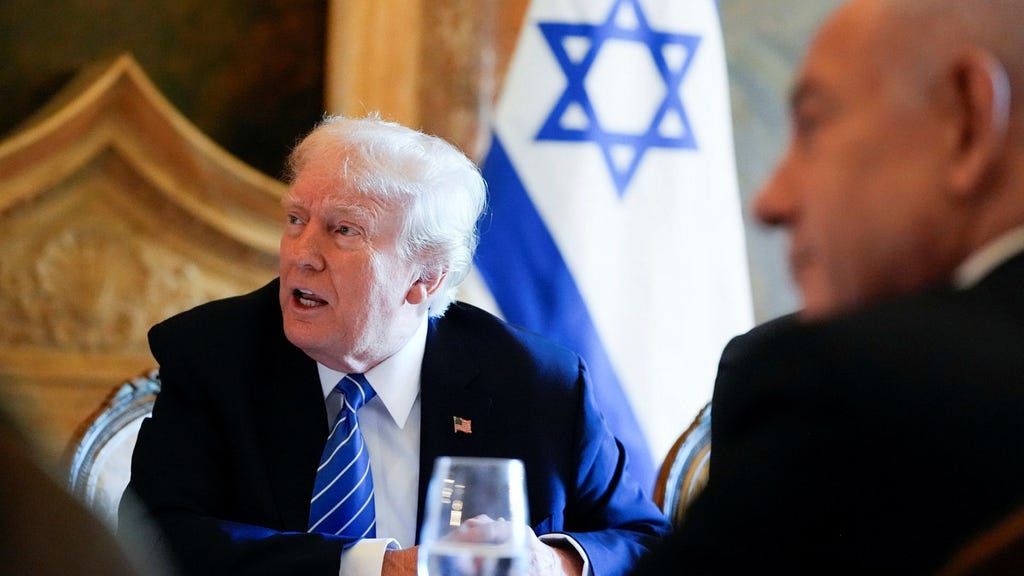Paragraph 1: Iran’s Vulnerability and Netanyahu’s Desires
Iran’s air defense system, significantly damaged by Israeli airstrikes last year, leaves the country more vulnerable than ever. Israeli Prime Minister Benjamin Netanyahu’s ideal scenario involves a joint US-Israeli attack against Iran’s nuclear program, or at the very least, a green light from the US for Israel to act independently. All indications suggest Netanyahu will implore US President Donald Trump for such support during his visit to the US in February. This vulnerability and Netanyahu’s hawkish stance set the stage for a complex diplomatic situation.
Paragraph 2: Trump’s Ambivalence and Hints at a New Deal
Recent statements from President Trump, however, have poured cold water on Netanyahu’s hopes. Trump has publicly emphasized his interest in a new nuclear agreement with Iran, a stark contrast to his 2018 decision to withdraw the US from the existing Joint Comprehensive Plan of Action (JCPOA) under pressure from Netanyahu. When questioned about supporting an Israeli attack on Iranian nuclear facilities, Trump responded ambiguously, stating he would meet with certain individuals and hoped for a peaceful resolution. This ambiguity, while potentially calculated, highlights a shift in Trump’s approach toward Iran.
Paragraph 3: Trump’s Leverage and Personnel Changes
Trump’s ambiguous stance can be interpreted in multiple ways. He recognizes the Israeli threat as leverage to bring Iran to the negotiating table. Further reinforcing Trump’s inclination towards a new agreement is his replacement of Brian Hook, a staunch Iran hawk, with Michael DiMino, a critic of Israel’s aggressive plans, as the special Iran envoy. These personnel changes signal a potential de-escalation of tensions and a renewed focus on diplomacy.
Paragraph 4: Backchannel Diplomacy and Pressure Tactics
Reports from well-informed Israeli media suggest that high-ranking officials within the Trump administration have communicated the President’s intentions to Netanyahu. While Trump aims to exert significant pressure on Iran, he prefers to postpone military action, believing a diplomatic solution that prevents Iran from acquiring nuclear weapons is attainable. This backchannel communication underscores Trump’s desire to control the situation and pursue a negotiated settlement. The involvement of Steve Witkoff, Trump’s friend and business associate, further strengthens this narrative. Witkoff, previously instrumental in brokering a ceasefire in Gaza before Trump’s inauguration, has been entrusted with leading the diplomatic efforts for a new Iran deal.
Paragraph 5: The Paradox of Trump’s Previous Iran Policy
Trump’s current approach seemingly represents a learning experience from his past actions. Upon assuming office in 2017, he inherited a situation where Iran’s nuclear program was under the scrutiny of the JCPOA. The International Atomic Energy Agency (IAEA) conducted inspections, and in exchange, economic sanctions against Iran were lifted. However, swayed by Netanyahu’s arguments, Trump withdrew from the JCPOA, leading to unintended consequences. Iran accelerated its nuclear program and now produces significantly more enriched uranium monthly. Experts believe a military solution to halt the program may no longer be feasible, a direct consequence of the withdrawal from the JCPOA.
Paragraph 6: The Path Forward and Uncertainties
The current situation presents a delicate balancing act. Trump’s desire for a new deal clashes with Netanyahu’s preference for military action, creating tension between the two allies. The effectiveness of Trump’s pressure tactics on Iran remains to be seen, as does Iran’s willingness to engage in renewed negotiations. The path forward is fraught with uncertainty, with the potential for both diplomatic breakthroughs and escalating tensions. The ultimate outcome hinges on the complex interplay between the US, Israel, and Iran, with the specter of military action looming in the background.














